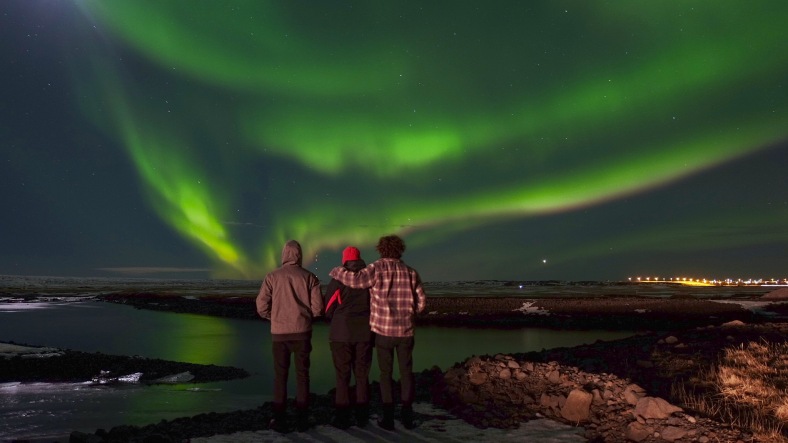It is always really satisfying to be able to apply the knowledge learnt from education to real life. During reading week I captured the image above, it shows sunset and the various colours of the spectrum on the sky, why does this occur? How come these are the colours? Are some of the questions that were answered in this week’s laboratory practical and subsequent readings.
There are interactions within the atmosphere that result in the different alterations of light and also on remote sensing systems, most notably absorption, refraction and scattering. Different wavelengths are absorbed as a result of the different gases that compose the atmosphere, these are varied across the energy emitted, causing ‘windows’ where radiation reaches the earth’s surface. Most remote sensing sensors operate by measuring the reflection of the radiation that is able to pass through the atmosphere and be reflected back, however some measure the absorption such as those from carbon dioxide (CO2) and other gases (NASA, 2017). Refraction occurs when radiation interacts between mediums of different densities, which can pose issues when trying to calculate the return of radiation (Aggarwal, 2004). Finally scattering, is the redirection of paricles within the atmosphere (Campbell, 2011).
There are 3 types of scattering, each related to different particle sizes, Rayleigh scattering is a result of smaller particles than the associated wavelength, Mie scattering with those of the same or similar sizes and Non-selective a result of particles larger than the associated wavelength, it’s because of scattering that the sky is blue and changes colour as it rises and sets (Campbell, 2011).
At longer distances light travels across the sky during sunset as illustrated below, with the shorter waves being more readily absorbed by the atmosphere and scattered around, shorter wavelengths, like red and orange, are able to reach us hence giving sunset the varying colours (UoW, 2017).
Following this photo, I managed to capture the image below, which lead me to look into how Aurora Borealis phenomenon occurred within the atmosphere. Unlike the sky being blue, the reason auroras occur is because solar winds distort the earth’s magnetic field allowing for charged particles from the sun to enter the atmosphere and energise gases, making them glow (BBC, 2017) this tends to occur more frequently nearer the magnetic poles.

This aspect of remote sensing was incredibly insightful, it taught me several things about the Earth’s atmosphere I had witnessed but did not actually know the cause off, making me wonder what else do I see and can be answered by remote sensing?
References
Aggarwal, S. (2004). Principles of remote sensing. Satellite remote sensing and GIS applications in agricultural meteorology, 23
BBC (2017). What are the Northern Lights? – BBC News. [online] BBC News. Available at: http://www.bbc.co.uk/news/science-environment-26381685 [Accessed 22 May 2017].
Campbell, J. (2011). Introduction to Remote Sensing. Taylor & Francis, London.
NASA (2017). Remote Sensing : Feature Articles. [online] Earthobservatory.nasa.gov. Available at: https://earthobservatory.nasa.gov/Features/RemoteSensing/remote_04.php [Accessed 21 May 2017].
UoW (2017). What Determines Sky’s Colors At Sunrise And Sunset?. [online] ScienceDaily. Available at: https://www.sciencedaily.com/releases/2007/11/071108135522.htm [Accessed 13 Mar. 2017].
